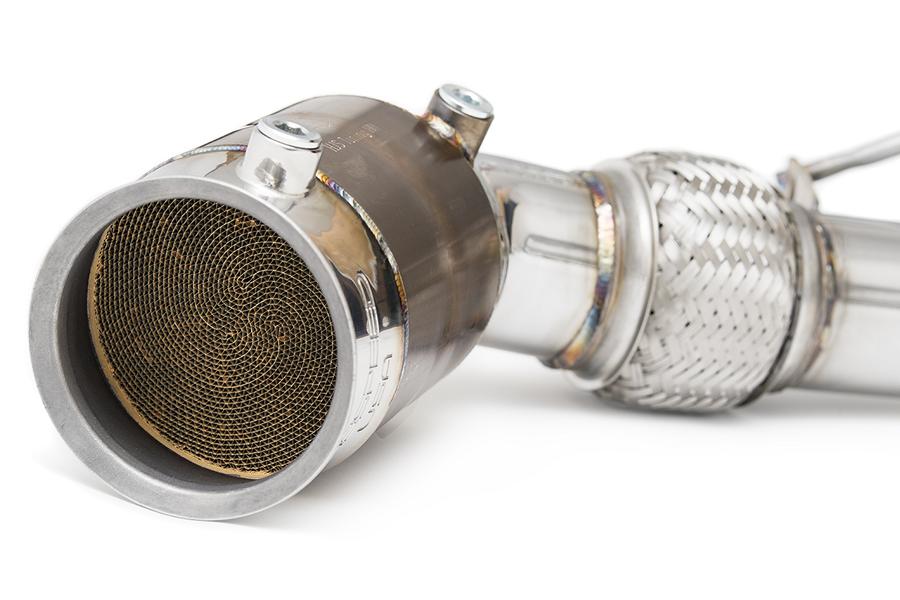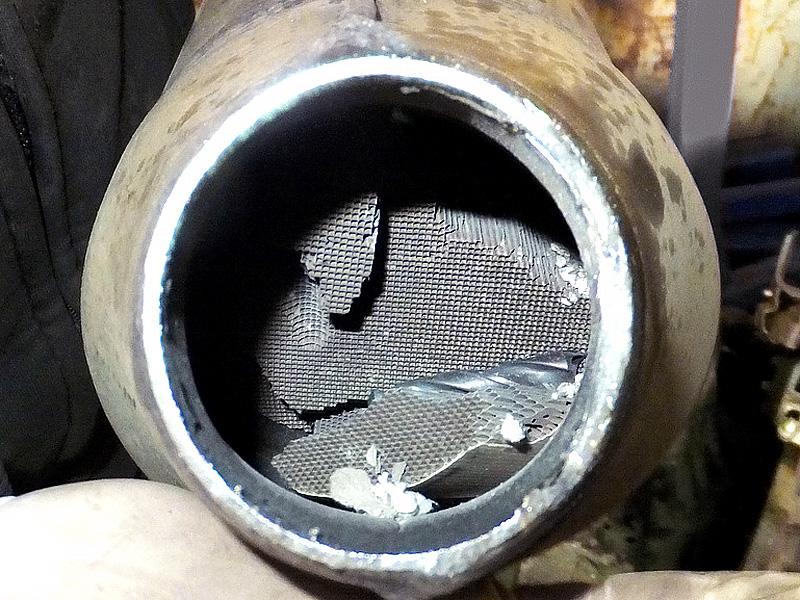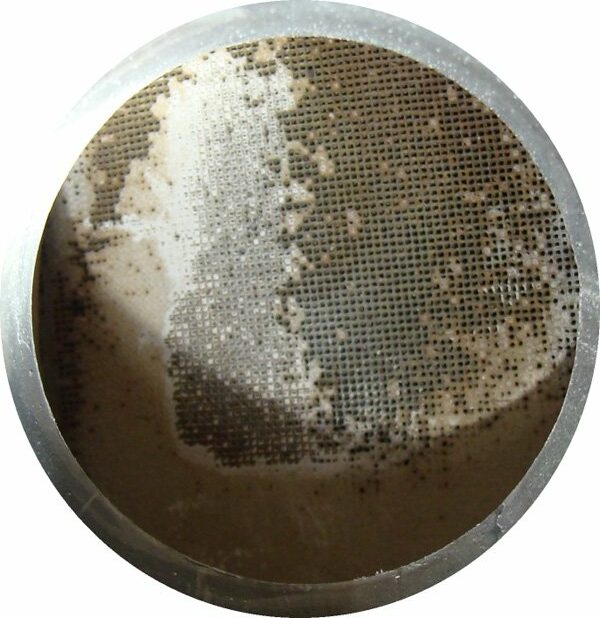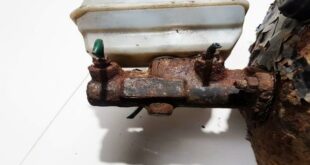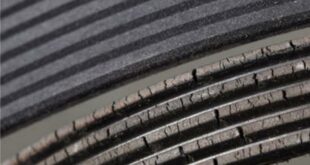Is the vehicle's catalytic converter defective? We know the symptoms, we know how the exchange / change works and we also have a rough guide to the costs. But before that, a little information on the subject. A catalytic converter is usually just called "Kat" and is part of the exhaust system. It primarily ensures that a large part of the harmful substances contained in the exhaust gases are largely converted into harmless substances by chemical reactions converted can be. As a result, the exhaust emissions of the car are greatly reduced. However, various causes ensure that the catalytic converter no longer works properly. And this is usually only noticed during the annual general inspection.
The first signs of a defect!
Mostly indicates noticeable exhaust odor to the defective catalytic converter. It is also noticeable when the Engine control lamp (MIL) lights up and there is therefore an emissions-related error. Or the MKL flashes, which also indicates that there is a fault in the system that may damage the catalytic converter. Other signs are higher emissions (determined, for example, by the main inspection), as well as inexplicable ones rattling noises Or less Performance. Often the car also jumps into the Emergency run or bumps blue smoke out. Last one can also Error memory entry such as "Catalyst effect insufficient' indicate a problem.
The causes of the defective catalytic converter
The causes of a defective catalytic converter are wear due to age, a wrong one mixture formation, Misfires respectively a not correct ignition timing or a defective one fuel cut. Can you continue? With a defective catalytic converter, it can happen that components of the exhaust system (Front, middle and rear silencer) are added by detached individual parts from the catalyst.
This aspect can lead to the complete exhaust congested and in the worst case the engine can no longer start. In addition, the damaged mufflers must then be replaced, which can result in additional high costs. It is therefore important to visit a workshop at the first sign of a defect in the cat.
Defective cat and the main inspection!
If the catalytic converter no longer works correctly, then this is a problem in the context of the necessary exhaust gas test for the HU. the Exhaust gas values then no longer fit. In this case, the main inspection is not passed.
Repair or replacement of the catalytic converter
In order to detect the defective catalytic converter, an exhaust gas test must first be carried out. If the suspicion of the defect is confirmed, the non-functioning catalytic converter is replaced with a new part. Used spare parts should not be used here, as wear and tear on these cannot be seen beforehand. Only if the origin is beyond doubt and the catalytic converter actually works for a long time can you fall back on a used part. There are vehicle-specific catalytic converters as well as universal catalytic converters ("Universal Kats"). The latter are generally cheaper, but sometimes have to be installed in a complex manner. A workshop can help with this.
The course of work on the catalytic converter
Depending on the model and design, the process for changing the catalytic converter varies significantly. On a lifting platform, the Paneling for of the sub-floor can be dismantled. Then the defective catalytic converter can be removed. Unfortunately, corroded nuts and bolts are often responsible for additional work. After removal, the new catalytic converter can be installed in the car or shrink wrapped will. Also, it's worth the Lambda sensor(s) in the form of Pre-cat and post-cat probe to be changed at the same time. An emissions test at the end ensures that the catalytic converter works properly. This is one of the reasons why a change should always be carried out by a specialist car workshop.
The cost of changing a catalytic converter!
The cost of a new catalytic converter is around 300 to 1.300 euros, depending on the vehicle type and the type of catalytic converter. The well-known accessory manufacturers are Ernst, Imasaf, Eberspächer and HJS. If different (or more) catalytic converters are installed in combination with each other, the costs can increase up to 3.000 Euro lie. In most cases, however, the driver can save money with a universal catalytic converter. However, this must be individually adjusted and in almost all cases welded will. But it is significant in terms of acquisition günstiger. However, it is not available for every vehicle. In the case of the universal catalytic converter, the material costs are around 100 to 600 euros. For the change of the specific catalyst are mostly between one and three hours needed. If a universal catalytic converter is to be installed, then the effort is higher. The time required generally depends on how many other components, such as the exhaust bracket, the underbody paneling or various pipe connectors, have to be dismantled for the change. On the other hand, it is crucial how simple the defective catalytic converter can be removed from the car.
For example, it may be that the exhaust flange cannot be detached due to corrosion, which then increases the effort. Based on an hourly rate of 100 euros, the labor costs for installing the vehicle-specific catalytic converter are around 100 to 300 euros. In some cases it is even necessary Transmission or the complete one Motor remove to access the catalytic converter. In this case, the workload for the exchange is quickly around 8 to 10 hours of work. Overall, you quickly come up with total costs of around 600 to 1.500 euros.
Importance of the catalyst!
Up to four catalytic converters are sometimes installed in the exhaust system. A distinction is made here between pre-, main, NOx and oxidation catalytic converters. Catalytic converters have the most important impact on low exhaust emissions in vehicles. After leaving the engine, the exhaust gases flow through thousands of channels coated with rhodium, palladium or platinum. In this way, carbon (CO), nitrogen oxides (NOx) and hydrocarbon compounds (HC) are oxidized to form carbon dioxide (CO₂), nitrogen (N₂) and water (H₂O). If everything is optimal and the operating temperature is around 400 to 600 °C, then a catalytic converter achieves an efficiency of up to 98 %. At least when the residual oxygen content in the exhaust gases is correct. And for that to be the case, one measures Lambda probe the residual oxygen content of the exhaust gases before and after the catalytic converter. The measured values go to the engine control unit so that it can prepare the mixture formation accordingly.
The following note is essential: For safety reasons, tuningblog recommends all repair, inspection and maintenance work exclusively to be carried out in a specialist workshop! Although our information is summarized to the best of our knowledge and belief, we cannot assume any liability for the content. All information is therefore "without guarantee".
Of course, that wasn't the end of it!
In this tuningblog category there are guides and instructions for common defects/repairs on the vehicle and for installing accessories/tuning parts. Our articles explain in a simple way common defects and the corresponding repairs and also explain how the first signs of a defect become noticeable. In most cases, we also have initial clues to the repair instructions in our repair instructions approximate The costs of the pending repair are listed. The goal of our subcategory “Auto Repair Guide“ is to create a head start in knowledge for the next visit to the workshop with initial tips. This may save you from tedious troubleshooting and small things can perhaps be done directly on your own. The same applies, of course, to the installation of accessories/tuning parts. Here, too, we would like to help with the implementation with instructions and tips. There are many other posts on this as well. Below is an excerpt of the last and HERE there are all previous instructions:
|
The repair of the handbrake cable: you should pay attention to that! |
"tuningblog.eu" - we keep you up to date on the subject of autotuning and car styling with our tuning magazine and present you with the latest tuned vehicles from all over the world every day. It's best to subscribe to ours Feed and will automatically be informed as soon as there is something new about this post, and of course also to all other contributions.
 tuningblog.eu Your magazine about tuning the car
tuningblog.eu Your magazine about tuning the car
